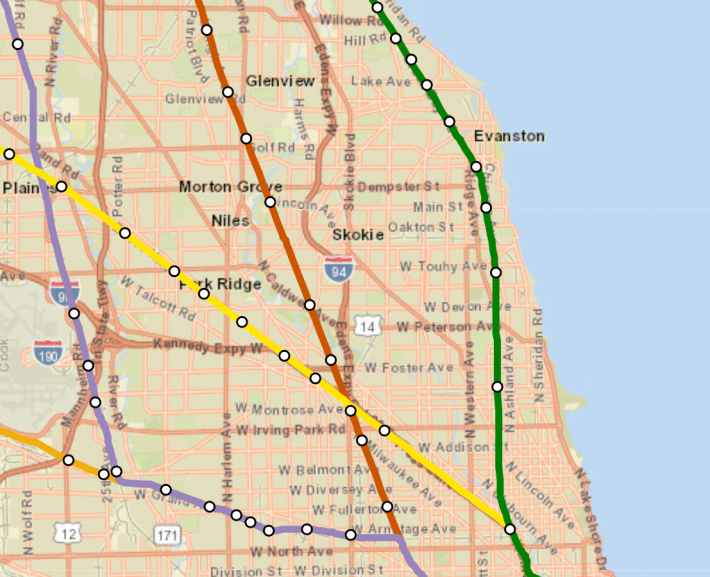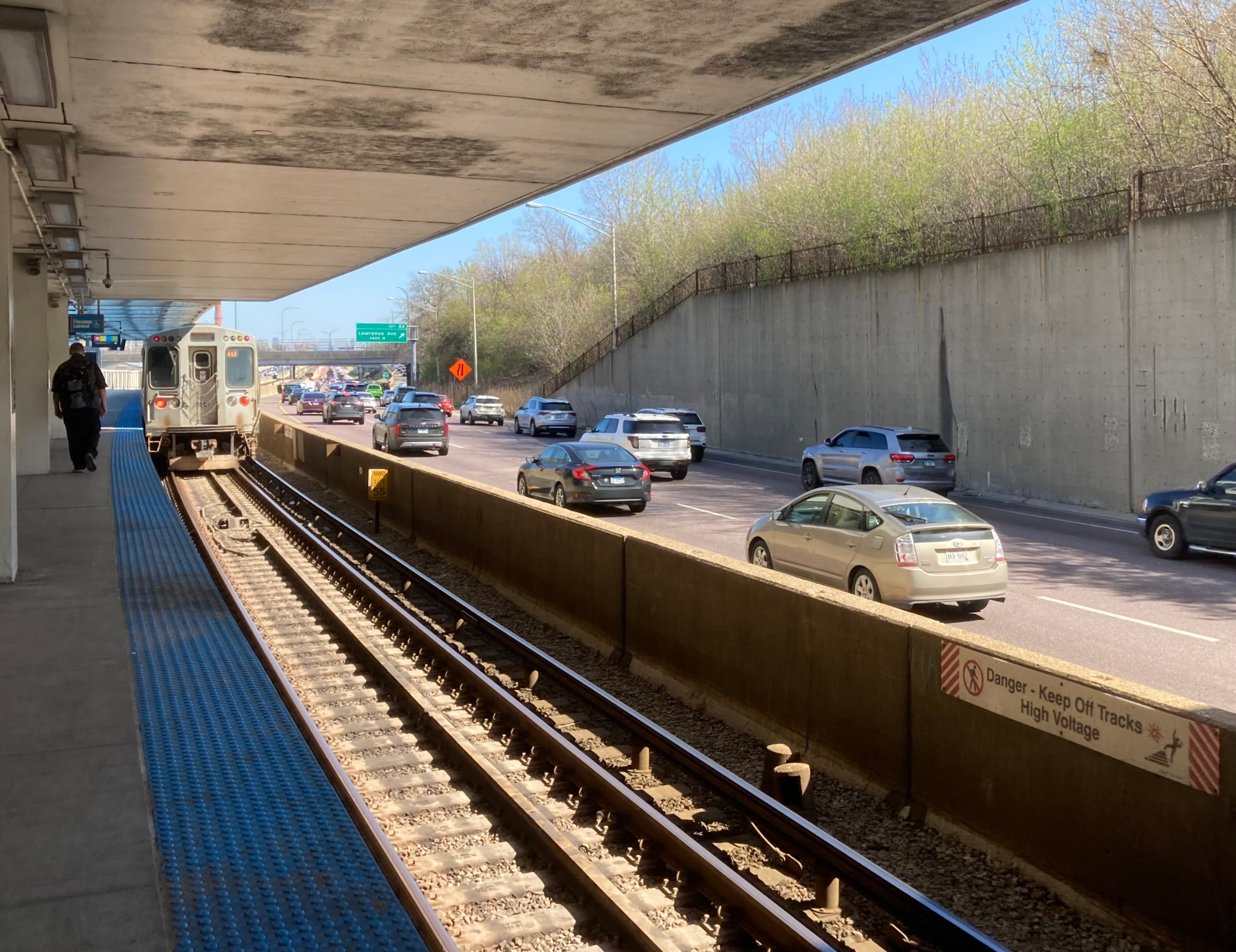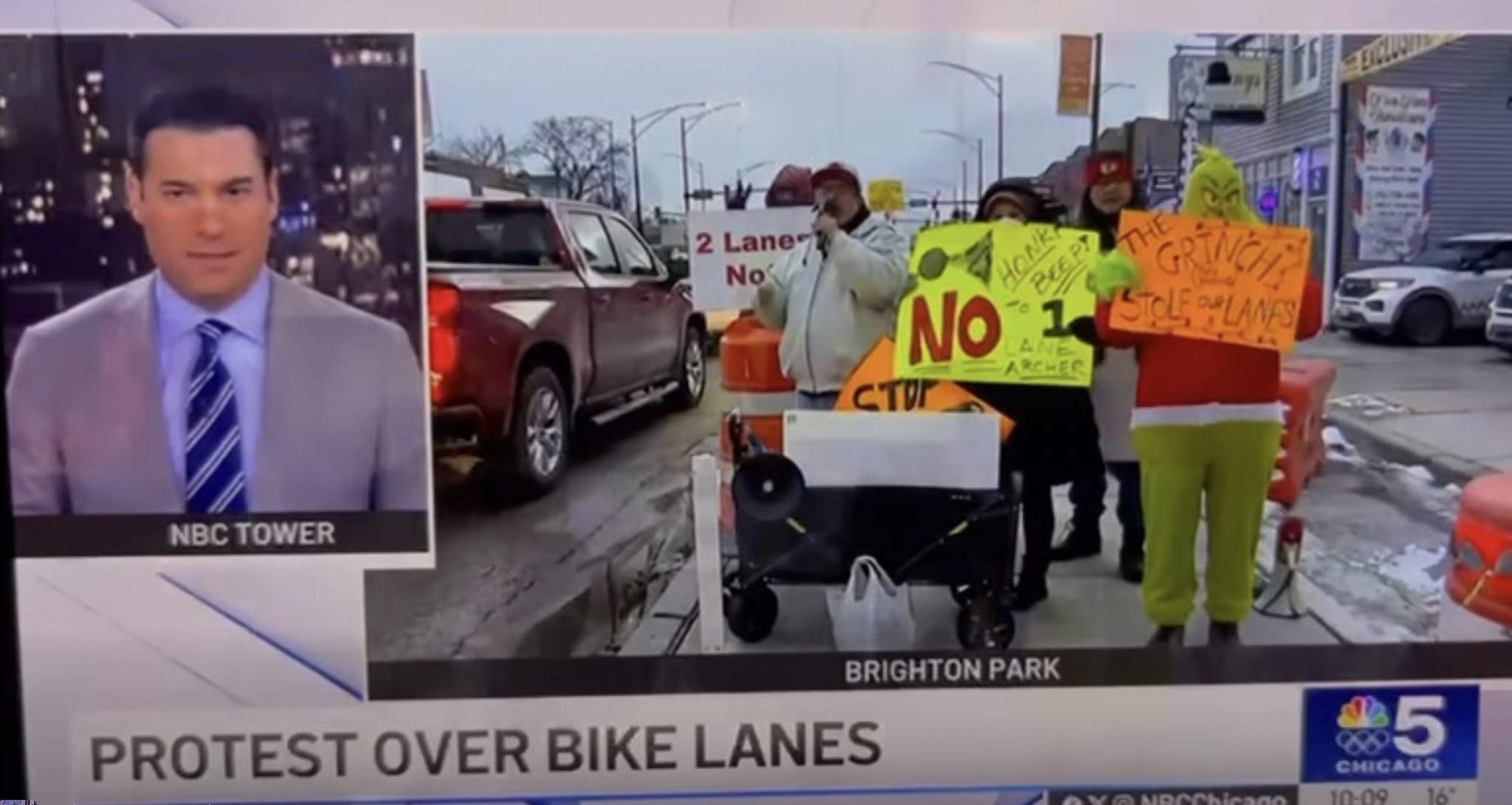Streetsblog recently looked at the three-year, $150 million Kennedy Expressway Bridge Rehabilitation Project, which is closing lanes along a 7.5-mile stretch of I-90/I-94 for various upgrades through at least fall 2025. During the current construction phase, which stated on March 20, two of the regular inbound lanes will be closed at a time. We also discussed what the various local transportation agencies are doing to mitigate commute hassles for both motorists and transit users, and what they should be doing.
Last week we checked in with the agencies to ask if they've noticed any impacts on travel times and bus and train riderships. Here's what they told us.
Illinois Department of Transportation spokesperson Maria Castaneda said IDOT doesn't have daily Kennedy traffic counts handy, since that data is compiled on a monthly basis and reported yearly. "However, we pulled travel times for the inbound Kennedy Expressway, from Montrose Avenue to the Jane Byrne Interchange, for March 16 to March 20 (before construction) compared to April 10 to April 14 (after construction):
March 16 -20 (before)
Average at 8:15 AM: 23 minutes
Average at 2:45 PM: 23 minutes
April 10 -14 (after)
Average at 8:15 AM: 32 minutes
Average at 2:45 PM: 39 minutes
So the lane closures have increased travel times by 39 percent in the morning and 70 percent in the afternoon. Granted, that's nothing to sneeze at, but presumably fewer typical car commuters are choosing to drive under these sluggish conditions. So what effect is that having on transit?
Said Metra spokesperson Michael Gillis, "I can tell you that [on the week of Monday, April 10] we hit post-COVID daily highs on seven of our 11 lines, including the four that serve the area covered by the Kennedy and Edens, and that road work certainly was a big factor." The four lines in question are (heading counter-clockwise) Union Pacific North, Milwaukee District North, Union Pacific West, and North Central Service. On April 3 Metra added 12 trains to weekday UP-NW service, a good strategy since that route closely parallels the Kennedy for much of its trip to Harvard, IL.
Unsurprisingly, Gillis said, "The UPNW saw the biggest gains, handling a post-pandemic high of 25,900 passenger trips on Wednesday, April 12, while the average for the six prior Wednesdays was 19,900. The Milwaukee District North hit a post-pandemic high of 12,300 passenger trips on Tuesday, versus an average of 11,400 on the six prior Tuesdays."

As for the North Central Service, it "hit a post-pandemic high of 2,700 passenger trips on Wednesday, versus an average of 2,300 for the six prior Wednesdays. And the UP North handled a post-pandemic high of 23,800 passenger trips on Wednesday, versus an average of 20,500 for the six prior Wednesdays. We didn’t see a huge jump when the Kennedy work started in March but some of that probably had to do with all the spring breaks taking place then – those are ending now." So it appears the Kennedy work has been a shot in the arm for north and northwest Metra line ridership.
The CTA recently added two additional morning rush trains to the O'Hare branch of the Blue Line, partly in response to the Kennedy project. A spokesperson said it's too soon to share recent ridership trains, particularly due to ridership fluctuation during spring break. "We are continuing to monitor ridership, and will share any notable trends we see at a later date."
Pace, on the other hand, reports a slight uptick in ridership. According to spokesperson Maggie Daly-Skogsbakken, on weekdays, Pulse Milwaukee express bus (Route 100) and Routes 270, 600, and 606 have seen more riders after the construction work began than during the period immediately before March 20.
| Route # | 100 | 270 | 600 | 603 | 605 | 606 |
| March 1-17 Daily Average | 1268 | 282 | 251 | 163 | 156 | 406 |
| March 20-31 Daily Average | 1340 | 319 | 266 | 152 | 150 | 420 |
Despite the significantly longer Kennedy travel times, there hasn't been much uproar about the project creating a carpocalypse. The Metra and Pace numbers suggest that's partly thanks to motorists switching to transit, as well working from home. Some credit also surely goes to the phenomenon of traffic evaporation – when you provide less space for driving, people simply choose to drive less.





